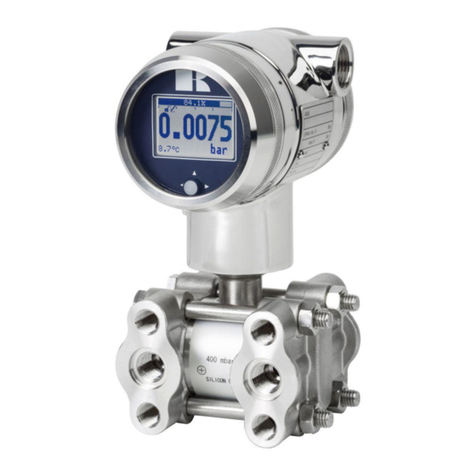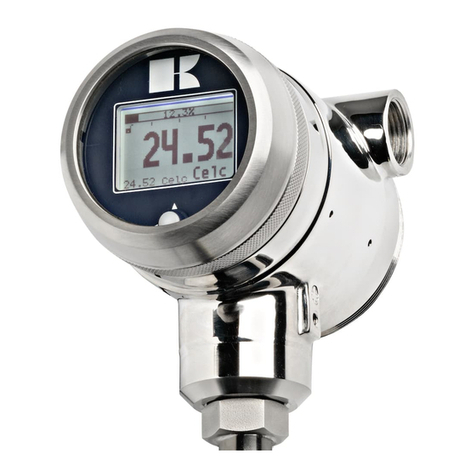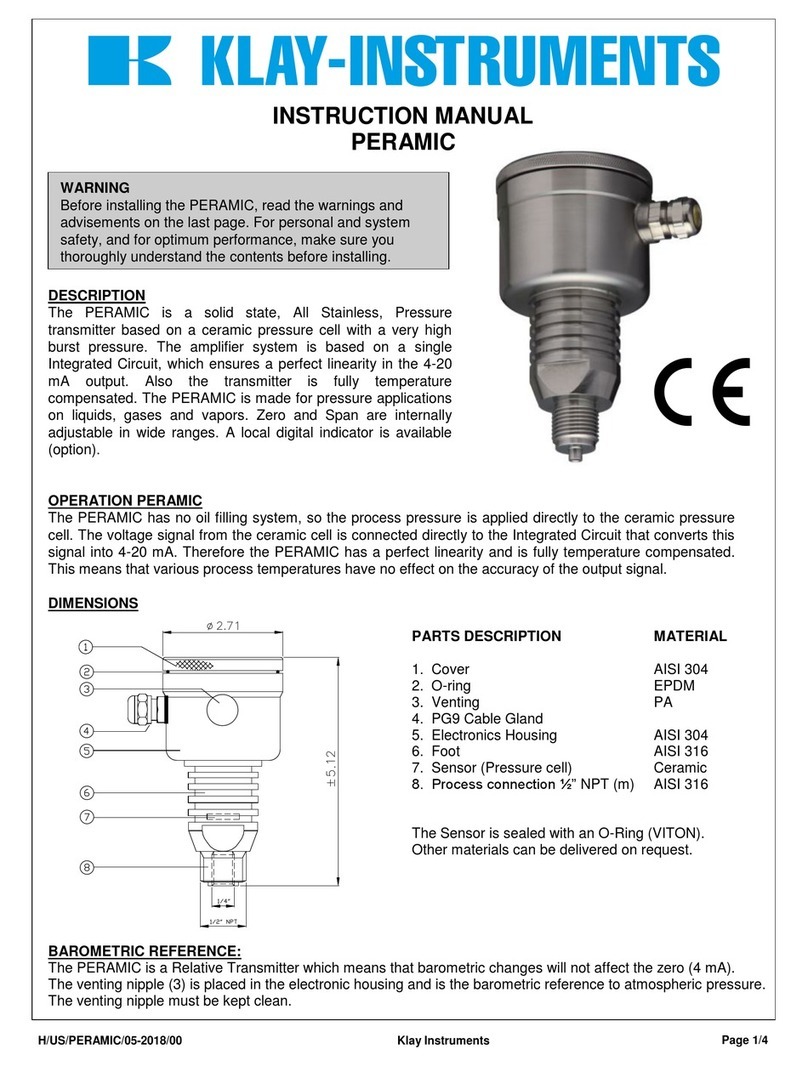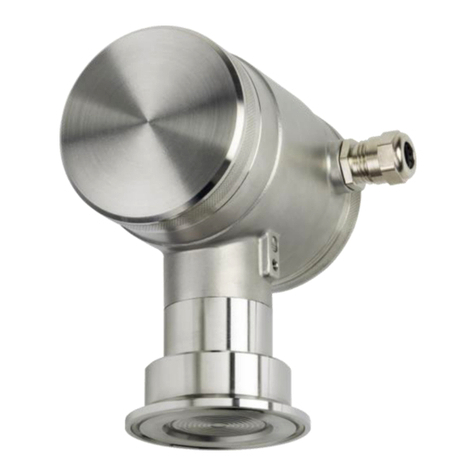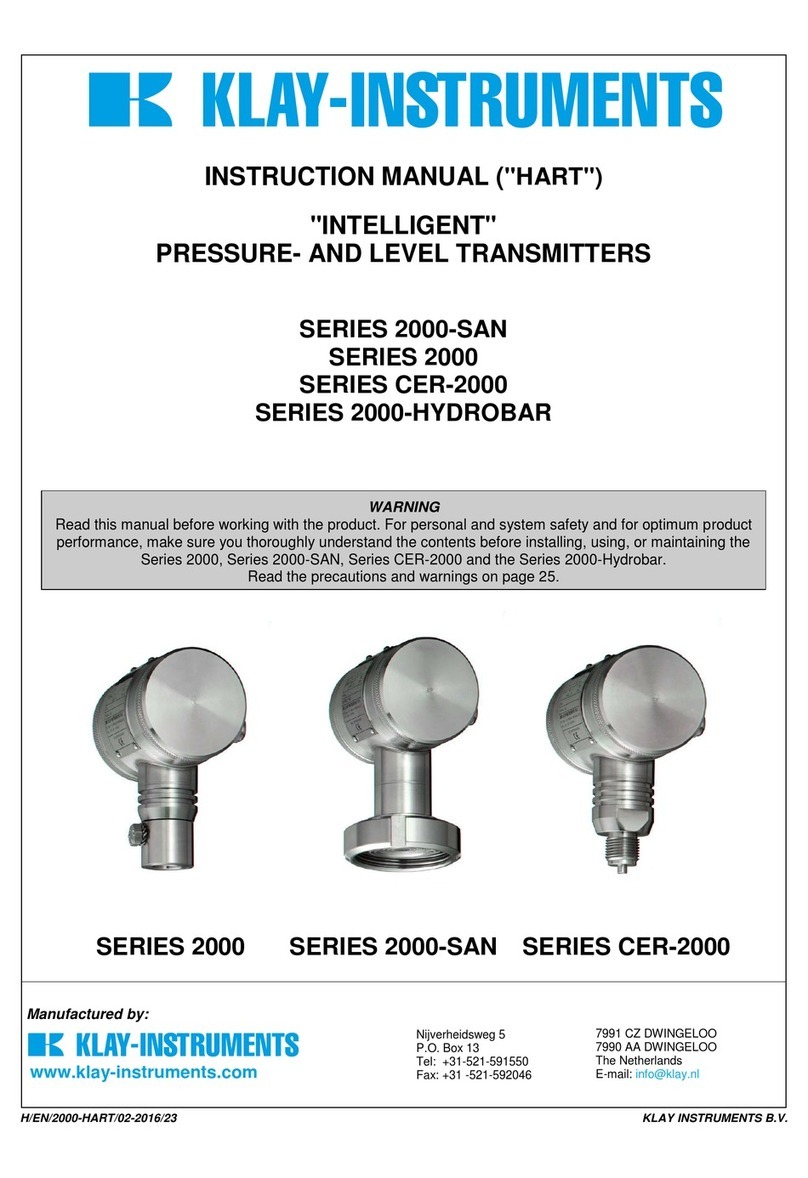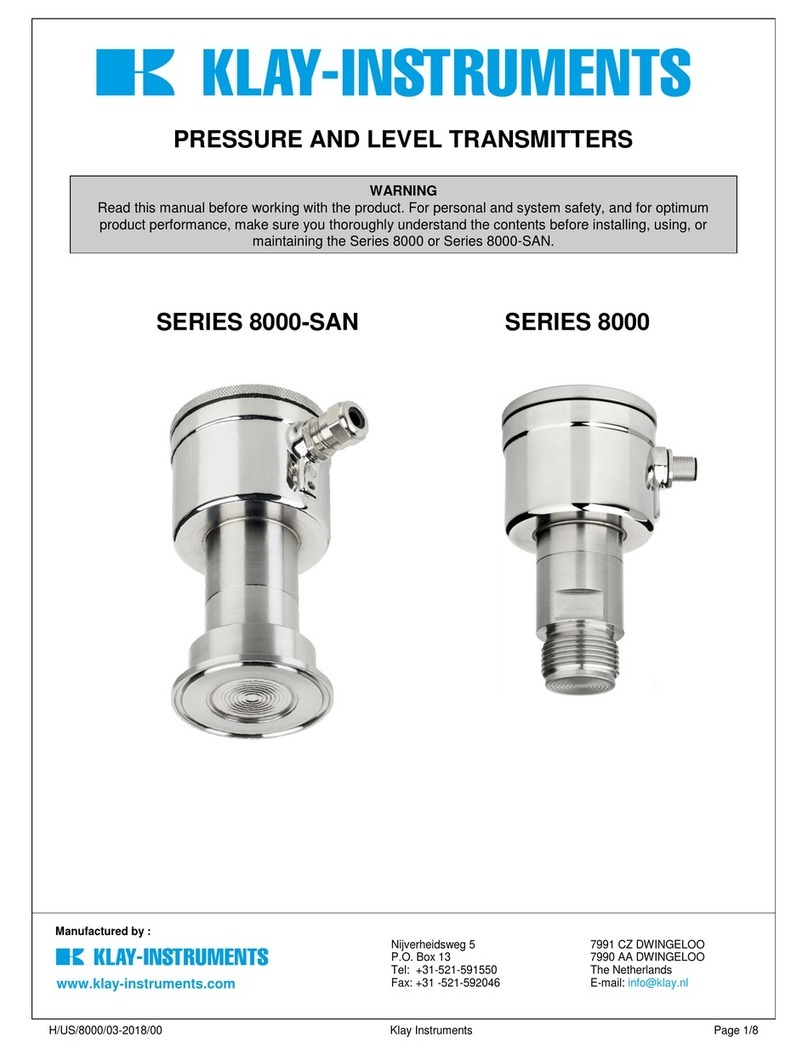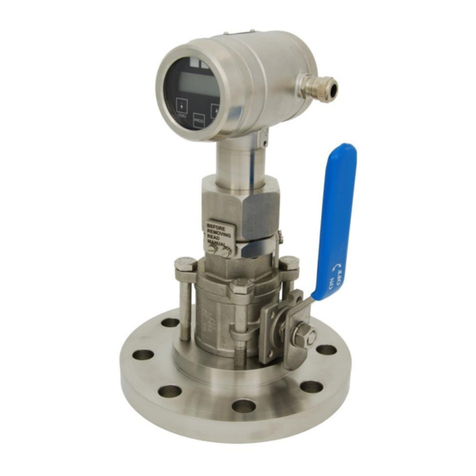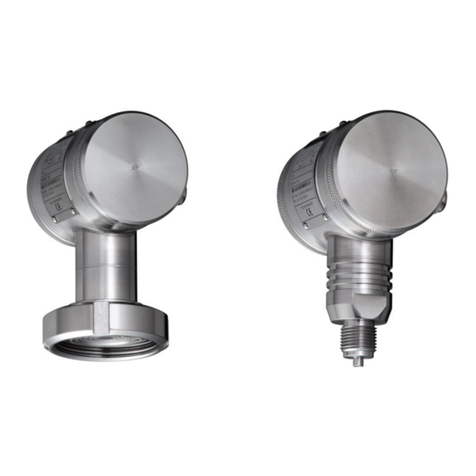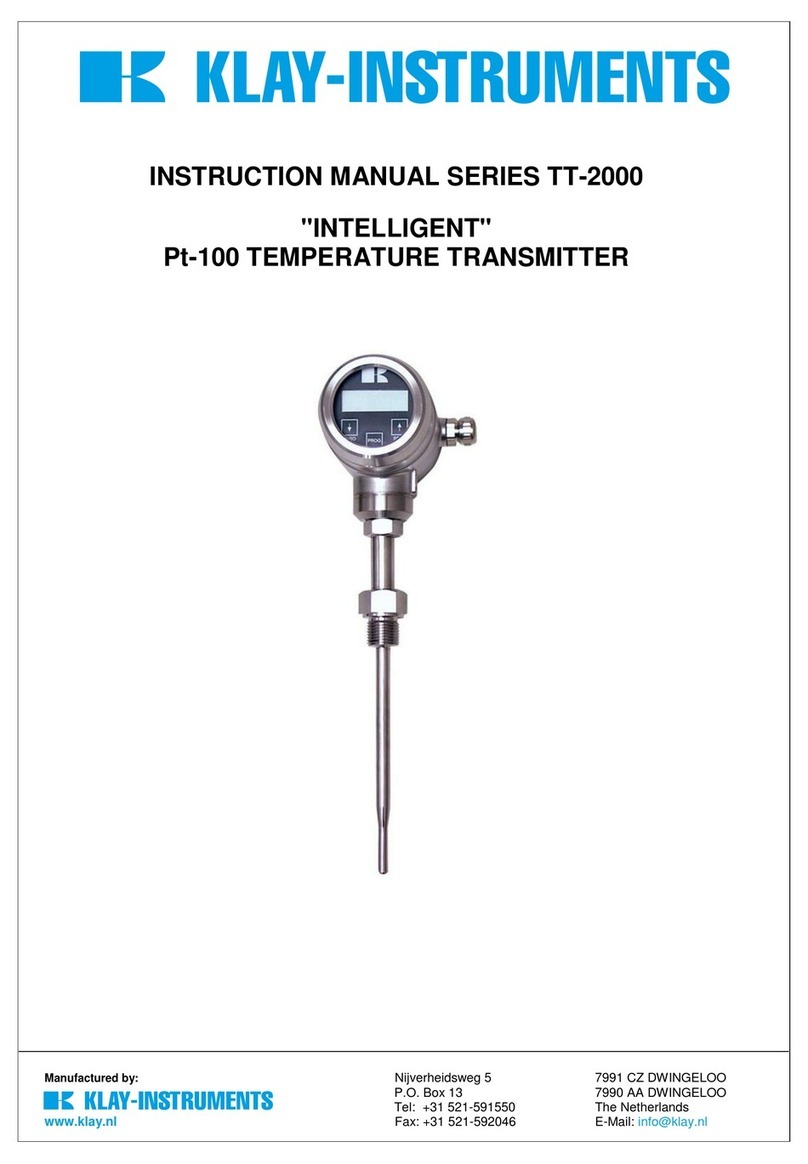Instruction manual Series 4000-PROFIBUS® PA
EN-4000-PROFIBUS-PA-04-2023-
03
Page 2
CONTENTS
1. INTRODUCTION..................................................................................................................... 3
1.1 DESCRIPTION SERIES 4000-SAN...................................................................................................................3
1.2 DESCRIPTION SERIES 4000...........................................................................................................................3
1.3 BAROMETRIC REFERENCE ...........................................................................................................................3
2. DIMENSIONAL DRAWINGS .................................................................................................... 4
3. INSTALLING THE TRANSMITTER ............................................................................................. 5
3.1 INSTALLING WELD-ON NIPPLE.....................................................................................................................5
3.2 INSTALLING TRANSMITTER SERIES 4000-SAN (Code W)...............................................................................5
3.3 INSTALLING TRANSMITTER SERIES 4000 (Code W33)...................................................................................5
3.4 MOUNTING POSITION.................................................................................................................................6
3.5 MOUNTING POSITION EFFECT.....................................................................................................................6
3.6 CALIBRATION..............................................................................................................................................6
3.7 PROFIBUS PA CABLE....................................................................................................................................6
3.8 CONNECTION TERMINAL.............................................................................................................................6
3.9 GROUNDING...............................................................................................................................................7
3.10 CABLE SHIELDING........................................................................................................................................7
3.11 TERMINATION ............................................................................................................................................7
4. REMAINING .......................................................................................................................... 7
4.1CE / EMC-RULES..........................................................................................................................................7
4.2TRACEBILITY / YEAR OF MANUFACTURING .................................................................................................7
5. GRAPHIC DISPLAY AND NAVIGATION BUTTON....................................................................... 8
5.2 SUMMARY PROGRAMMING POINTS...........................................................................................................9
6. EXPLANATION PROGRAMMING POINTS .............................................................................. 10
6.1 ZERO ADJUSTMENT (ZERO) .......................................................................................................................10
6.2 SPAN ADJUSTMENT (SPAN)....................................................................................................................... 10
6.3 CANCEL MOUNTING POSITION EFFECT......................................................................................................11
6.4 DISPLAY SETTING OF UNITS.......................................................................................................................11
6.5 OUTPUT SELECTION ..................................................................................................................................11
6.6 DAMPING ADJUSTMENT ...........................................................................................................................12
6.7 LANGUAGE ...............................................................................................................................................12
6.8 DEVICE SETUP ...........................................................................................................................................12
6.9 READOUT.................................................................................................................................................. 14
6.10 TANK LINEARIZATION ............................................................................................................................... 14
6.11 INFORMATION..........................................................................................................................................22
6.12 CALIBRATE ................................................................................................................................................22
6.13 PA ADDRESS..............................................................................................................................................23
6.14 FACTORY................................................................................................................................................... 23
7. PROFIBUS® PA .................................................................................................................... 23
7.1 PA INTERFACE...........................................................................................................................................23
7.2 IDENT NUMBER.........................................................................................................................................29
7.3 GSD FILES..................................................................................................................................................29
7.4 ENGINEERING UNITS................................................................................................................................. 30
7.5 PROFIBUS ADDRESS ..................................................................................................................................30
8 ROTATABLE DISPLAY ........................................................................................................... 31
9. SPECIFICATIONS.................................................................................................................. 32
10. PRECAUTIONS AND WARNINGS........................................................................................... 33
